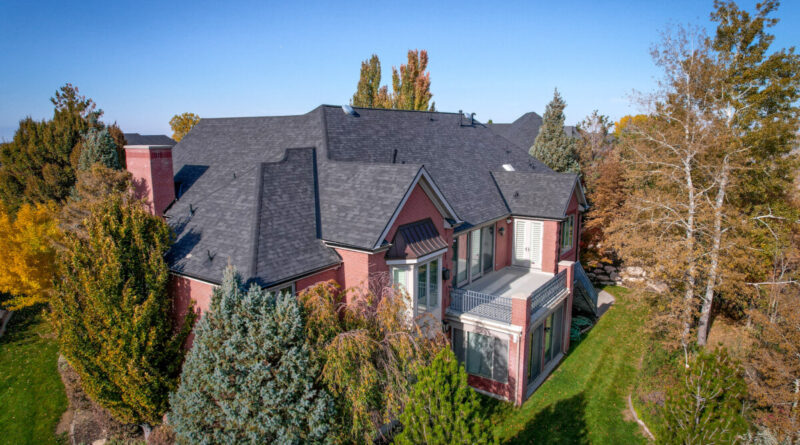Ventilation Questions
Picking the Best Attic Exhaust Vents for the Roof
by Paul Scelsi, Marketing Communications Manager, Air Vent
Every time a roof is installed, five key questions should be asked as part of the Attic Exhaust Vent Decision Tree. It’s become one of the most popular segments in Air Vent’s educational seminars. The answer to those questions not only impacts the life of the roof but also the curbside appearance the homeowner will see every day.
The goal of the decision tree is to help guide architects who write specs, home builders who are building new homes, and roofing contractors who are replacing roofs to select the best, most appropriate attic exhaust vent type for the roof. There are times to use any number of the five types of attic exhaust vents, and there are times to stay far away from some of them because they are not a practical solution. The five types of attic exhaust vents are: ridge vents, wind turbines, gable louvers, roof-mount and gable-mount power fans, and individual roof louvers.
In Air Vent’s podcast interview with Edgar Arellano, owner of The Roofing Experience, Ogden, Utah, Arellano shared with us how he climbs the decision tree for each roofing project he takes on asking and answering these five key questions.
What’s the Roof’s Shape?
“The shape is a very important aspect of the roofing system,” Arellano said. “I need to know if it has enough horizontal ridges to use ridge vent or if there’s a lot of cut up areas that are better suited for individual turtle back vents, or wind turbines, or possibly a power fan. It just depends on how the architect wrote and designed the specs, how the builder built it. The roof shape helps me select the most efficient exhaust vent system to assist airflow for that roof.”

What’s the Attic’s Size?
“First it’s important to understand that the roof size and the attic size are different measurements,” Arellano said. “I estimate that the attic square footage is about 10-15% less than the roof’s square footage. Once I know the attic’s square footage I use the ventilation calculator, there are apps and online tools available, to see the various exhaust and intake vent options to choose from.”
What’s the Vent’s Airflow Capacity?
Every vent manufacturer assigns a value expressed either as Net Free Area, for non-motorized vents, or Cubic Feet of airflow per Minute/CFM, for motorized vents. These assigned values reveal how much air can pass through the vent. “The vent’s airflow capacity is very important. This is another reason I like using the calculating tools out there like the Air Vent app because it lists the airflow capacity of every vent type. It makes the calculating easier and shows me the options at a glance.” Arellano said. He also will talk to the homeowner who can point out certain rooms in the house that are hotter than others. That information can guide him to suggest a power fan to move a lot of air quickly out of the attic. “The homeowner might tell me it’s 72 degrees in my living room but the room over there is much warmer. That helps guide my attic exhaust vent strategy as well roof shape and attic size,” Arellano explained.
How Many Vents Will be Needed?
“Every roof is different. The first thing I want to understand is how can I give this attic the correct amount of airflow it needs,” Arellano said. “I also check the shingle manufacturer’s requirements for attic ventilation. So now I have the manufacturer’s guidance and the calculating tool’s information. From there I can see the quantity of vents needed for any of the attic exhaust vent options I’m considering.”
What Will it Look Like When it’s Installed?
This key question is really asking, what will the homeowner be looking at on their roof for however long they live in that house? “In my opinion it’s all about function and beauty,” Arellano said. “Homeowners spend thousands of dollars to replace a roof. I don’t want them second guessing the beauty of it because of the attic exhaust vents. So to me the aesthetics of the roof is a very important part of the roof not just the functionality of the roof.”

Blending Beauty and Performance
Arellano is convinced you can blend beauty and function just about every time with the attic exhaust vent selection. “Usually I like to use ridge vents when they are an option for the roof because they give you the most symmetrical and cleanest look possible. If ridge vents are not an option due to the roof’s shape, then I select an exhaust vent color that best matches the shingle color to give it the best chance to blend in with the roof, whether it’s box vents or power fans or wind turbines,” Arellano said. “So when the homeowner pulls up to their house their paying attention to the whole roof and not just parts of it that might have an eyesore because of the look and quantity of the attic exhaust vents installed. To me it’s important that the roof be both functional and aesthetically appealing.”
Not every homeowner wants the best performing and best-looking attic exhaust vent option available. Sometimes they simply want whatever was on the roof to begin with before the replacement roof process begins. “As the professional contractor, our responsibility is to explain to the homeowner their options in terms of both attic exhaust vent performance and appearance, but sometimes they resist,” Arellano said. “I try to educate them about their options. Most homeowners tend to yield to what the professional is recommending.”
Helping make his case to homeowners is his collection of photographs and drone footage of beautifully installed roofs by The Roofing Experience. “That’s one of the main reasons I capture the photos and footage. I bring my big iPad Pro and show the homeowner past roofs my team installed. It gives a personal touch and helps them visually see the outcome their roof can have,” Arellano said. “Sometimes I’ll even send them addresses of those houses so they can see the project in person if they choose. Roofs are not cheap. Roofs are expensive. The last thing I want is someone calling me because they’re still having the same issue they had before we were hired to replace the roof. So I make a point to give them the best options addresses roof functionality and beauty.”
There is a time to use any one of the five types of attic exhaust vents. Assessing the project for roof shape, attic size, vent airflow capacity, quantity of vents needed, and curbside appeal will help determine if one exhaust vent type may be better suited than another. That’s climbing the attic exhaust vent decision tree.



